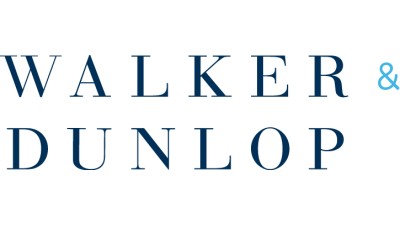The 'Music Is Going To Stop': The Homebuilder Land Grab Is A Crisis In The Making

The nation’s largest homebuilders are buying up undeveloped land at a frantic pace. With Americans clamoring for new single-family homes to purchase and rent, the short-term outlook for homebuilding has rarely been better.
But analysts are worried that as interest rates and mortgage rates rise, all those land purchases could create an economic pinch for homebuilders that overextended themselves.
“The biggest concern I have is the land grab,” Ivy Zelman, CEO of housing research firm Zelman & Associates, said on the most recent Walker & Dunlop Walker Webcast. “The majority of these homebuilders are going out and buying land and underwriting today’s record-high absorption and price growth. Those numbers are not sustainable, but builders are buying land as if they are.”
According to her firm’s research, Zelman forecast that home prices, which spiked between 10% and 13% in 2020, would rise by a more modest 6% in 2021 and 2022. During 2020, homebuilders have been able to increase their profit margins by passing the increased costs of labor and materials along to consumers, who have thus far seemed happy to purchase new homes at higher costs.
If demand for new homes slackens and if the Federal Reserve raises interest rates, though, those margins will tighten. Homebuilders should be able to provide financial incentives to keep new buyers interested, Zelman said, but each added incentive tightens the builder’s margins further. To keep being profitable, they will need to build more houses. And to build more houses, they need more land.
“The homebuilders can’t stop buying land because they only survive if they have the volume,” Zelman said. “They’re seeing incredible margin expansion right now, but that music is going to stop. When it does comes down to rates.”
While the Federal Reserve has said that it doesn’t have any concrete plans to raise interest rates, it is also unlikely to cut interest rates again. Mortgage rates, which dropped steadily in 2020, are similarly unlikely to drop further.
“Last year, there were 13 or 14 record lows set by 30-year fixed mortgage rates,” CNBC real estate correspondent Diana Olick told Walker & Dunlop CEO Willy Walker. “I don’t think you’re going to see that again anytime soon.”
When rates do rise, homebuilders could find themselves with a massive backlog of houses to build and profit margins that have suddenly turned negative.

Economic and demographic trends could similarly start eating into the demand for housing sooner rather than later. Lumber costs have spiked, as have costs for housing finishes and appliances, whose supply chains have been snarled by the coronavirus pandemic. The cost of construction and trucking labor is on the rise, thanks to a shrinking labor force. And many households that have become multigenerational — bringing a parent or adult child back into the home — could stay that way for years rather than quickly snapping back once the pandemic ends, Olick said.
Walker asked Olick whether she thought there was a possibility for a glut of new single-family home supply as homebuilders go on a development spree. Olick said she is skeptical that a glut could ever form, at least within affordable homes.
“I think homebuilders need to put the pedal to the metal,” Olick said. “I know there are a lot of headwinds, from land, labor, materials cost skyrocketing, but when we look at supply, we need more entry-level homes. A lot of the low-end housing stock was bought by investors as single-family rental, and there’s not enough of that supply in existence.”
The single-family rental and build-to-rent sectors have seen exceptional levels of activity over the last year, Zelman said, and boast some of the highest cash-on-cash returns of any sector across commercial real estate. While single-family rentals are still dominated by mom-and-pop owners with portfolios of only a few properties, 2020 saw several industry giants expand their single-family rental portfolios or enter the market for the first time. In many cases, Zelman said, investors have kept first-time homebuyers out of the market.
Olick said that the single-family rental was likely to keep growing, especially as young millennials and members of Generation Z, many of whom don’t have the funds to purchase a home, continue to rent but choose not to live in downtown apartments. Even growing pet ownership has pushed demand for single-family rentals, since pet owners require more space than multifamily buildings offer.
When Walker posed Zelman the question of which real estate asset class she would invest in if she had $100M to deploy, she responded emphatically in favor of single-family rental.
“I would be putting in to do fix-and-flip or new construction on existing lots, to densify these more suburban infill areas,” Zelman said. “We have large, aging homes in disrepair with very large lots. You can knock them down and build several units on the same lots. That’s where I think the greatest need is and the greatest opportunity.”
On March 10, Walker will host Joseph Coughlin, director of the Massachusetts Institute of Technology AgeLab to discuss the older adult market and how companies can build and sell to older consumers' needs. Register here for the webcast.
See Walker's future guests and register for the Walker Webcast here.
This article was produced in collaboration between Walker & Dunlop and Studio B. Bisnow news staff was not involved in the production of this content.
Studio B is Bisnow’s in-house content and design studio. To learn more about how Studio B can help your team, reach out to studio@bisnow.com.

